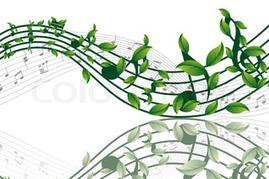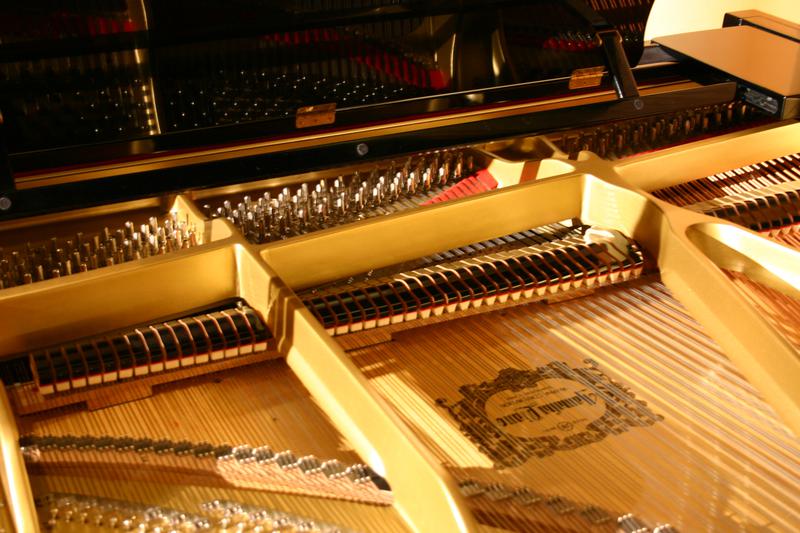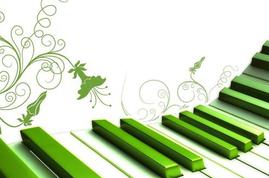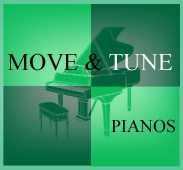Add more info here
Or, call us at (720-366-0481 on Mon - Fri 8:30 AM - 5:30 PM.
[Note: this demo text is optimized for the words "wireless"," "network design" and "secure communication." In an online search, using these key terms would help this page rank higher among the results. Remember to optimize your page content with keywords like these that best describe your business.]
7061 South University Blvd. Highlands Ranch, CO 80122 | (720) 366-0481 | Mon - Fri 8:30 AM - 5:30 PM
Piano Instrument Definitions
Rim
Made entirely from hard rock maple; 17 laminations; continuous bent, both inner & outer form one single rim; unequaled strength and stability.
Braces
Spruce provides tensile strength with less weight. Maple dowels fasten braces to rim producing a single foundation upon which is built the entire tonal component. A cast iron treble bell, affixed to rim's underside at treble bend, holds plate firmly in position by means of a steel bolt. The S & S iron wedge anchors brace ends securely to the cross block assuring permanent rim posture.
Piano Pinblock
Laminations of quartered hardrock maple stock. Grain symmetrically distributed at successive angles of 45°, 90°, employing grain direction uniformly around the circumference of the tuning pin to provide the ultimate in pin grip. As a result of this exclusive design, the tuning pin has smoother movement under torque, a more uniform retaining action for solid setting, and a piano which will hold its tuning longer.
Piano Soundboard
Created like the soundboard of violins to give a free and even response throughout the entire scale, it is so constructed as to be 9 mm thick in the center and tapered to 6 mm as it approaches the rim and outer case before being crowned. This design permits complete freedom of movement, while acting as unit to displace a greater amount of air, thereby creating a richer and more lasting tonal response. Close-grained, quarter-sawn Sitka spruce, a wood having unusual stability and vibrance under stress and vibration, is used exclusively for the soundboard.
Ribs
Made from durable, resinous sugar pine to assure strong and constant support of string down-bearing on the soundboard. Rib ends are hand-fitted into their mounting surfaces virtually locking in the important soundboard crown.
Bridges
Treble: Hard rock maple vertical laminations capped with solid hard rock maple; planed to prescribed height, graphite coated, drilled, and notched by hand for precise individual string bearing. Design defies splitting. Bass: Continuous with treble. Maple doweled, glued, and screwed to soundboard.
Scale
Overstrung; combination agraffe; Front AND rear duplex. Tension: 45,373 lbs. (20,418 kg)
Plate
Sturdy gray iron; filled, CNC-milled, and sealed; bronzed and lacquered.
Tuning Pins
Premium blued steel with rust-resistant, nickeled heads.
Piano Strings
Treble: Twelve whole & one-half sizes from high-tensile Swedish steel. Bass: Swedish steel core wire wound with pure copper. Longest,
Piano Hammers
Premium wool top felt over premium wool under felt; treated to resist insects and moisture. Compression-wired to retain permanent shape. Hard rock maple hammer moldings and shanks.
Piano Dampers
Horizontal-cut premium wool for effective dampening. Maple heads for endurance.
Piano Action
White, quarter-sawn maple parts are bushed with specially treated wool action cloth for freedom from friction. Parts are anchored in hard maple dowels housed in inflexible seamless brass tubing to assure precise & stable regulation. Exclusive single, combination phosphor bronze repetition & fly spring provides constant, crisp touch response. Specially designed to respond 14% faster fortissimo & 6% faster pianissimo by using an exclusive combination of half-round balance rail bearings and strategically placed key leads.
Piano Keys
European spruce, individually weighed-off, stain-resistant coverings for naturals; slip-proof, delicately abraded ebony sharps. Tough, durable Linden wood buttons reinforce keys over balance rail permitting maximum tonal power with every strike.
he chromatic compass of keyboard instruments has tended to increase. Harpsichords often extended over five octaves (61+ keys) in the 18th century, while most pianos manufactured since about 1870 have 88 keys. Some modern pianos have even more notes (a Bösendorfer 225 has 92 and a Bösendorfer 290 "Imperial" has 97 keys). While modern synthesizer keyboards commonly have either 61, 76 or 88 keys, small MIDI controllers are available with 25 notes. (Digital systems allow shifting octaves, pitch, and "splitting" ranges dynamically, reducing the need for dedicated keys.) Organs normally have 61 keys per manual, though some spinet models have 44 or 49. An organ pedalboard is a keyboard with long pedals that are played by the organist's feet. Pedalboards vary in size from 12 to 32 notes.
In a typical keyboard layout, black note keys have uniform width, and white note keys have uniform width and uniform spacing at the front of the keyboard. In the larger gaps between the black keys, the width of the natural notes C, D and E differ slightly from the width of keys F, G, A and B. This allows close to uniform spacing of 12 keys per octave while maintaining uniformity of seven "natural" keys per octave.
Piano Keybed
Made from planks of stable, quarter-sawn spruce. Horizontal planks are freely mortised together, while their ends are permanently mortised into vertical planks made of birch, presenting a vented system for humidity escapement while allowing for necessary expansion and contraction. Front center is crowned contrasting the reverse-crowned action frame for snug fit. This design intensifies key movement and prevents "slapping" during heavy playing. Large maple dowel ends provide a solid mount for adjustable brass touch-regulating screws. Thickness: 1 3/4" (4.45 cm)
Piano Pedals
Piano pedals are foot-operated levers at the base of a piano which change the instrument's sound in various ways. Modern pianos usually have three pedals, from left to right, the soft pedal (or una corda), the sostenuto pedal, and the sustaining pedal (or damper pedal)
Welcome to Move and Tune Pianos!
Do you need a Baby Grand, Grand Piano or an upright Piano moved or tuned or both, our professional moving team will be able to assist you with your Piano relocation needs, no matter where the piano is because we have all the piano Moving tools including piano Trolleys and other equipment to make piano moving easy.
Call Now for FREE Estimate 720-366-0481
of Highlands Ranch




